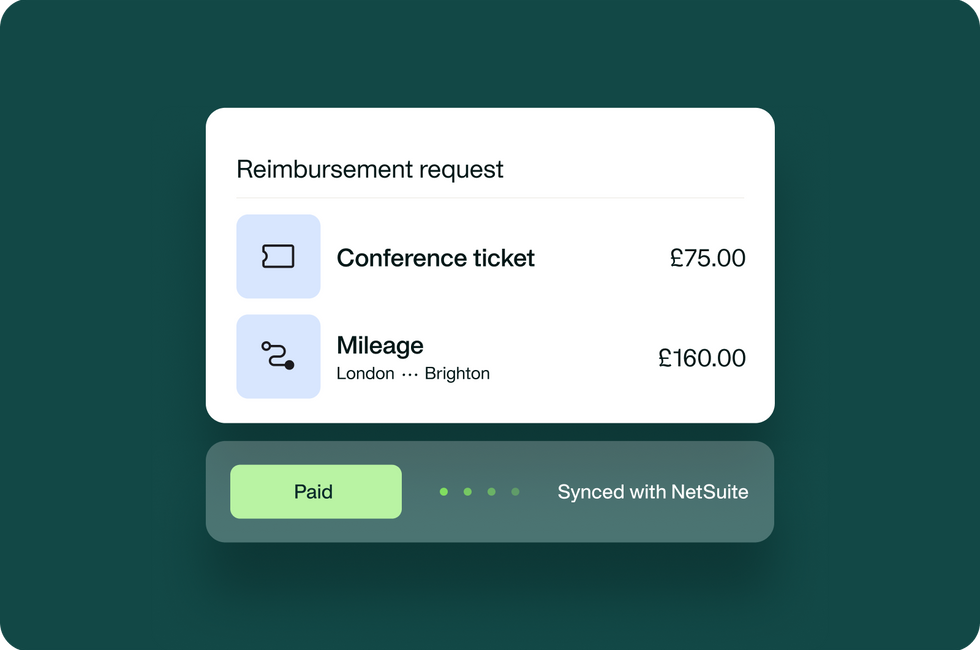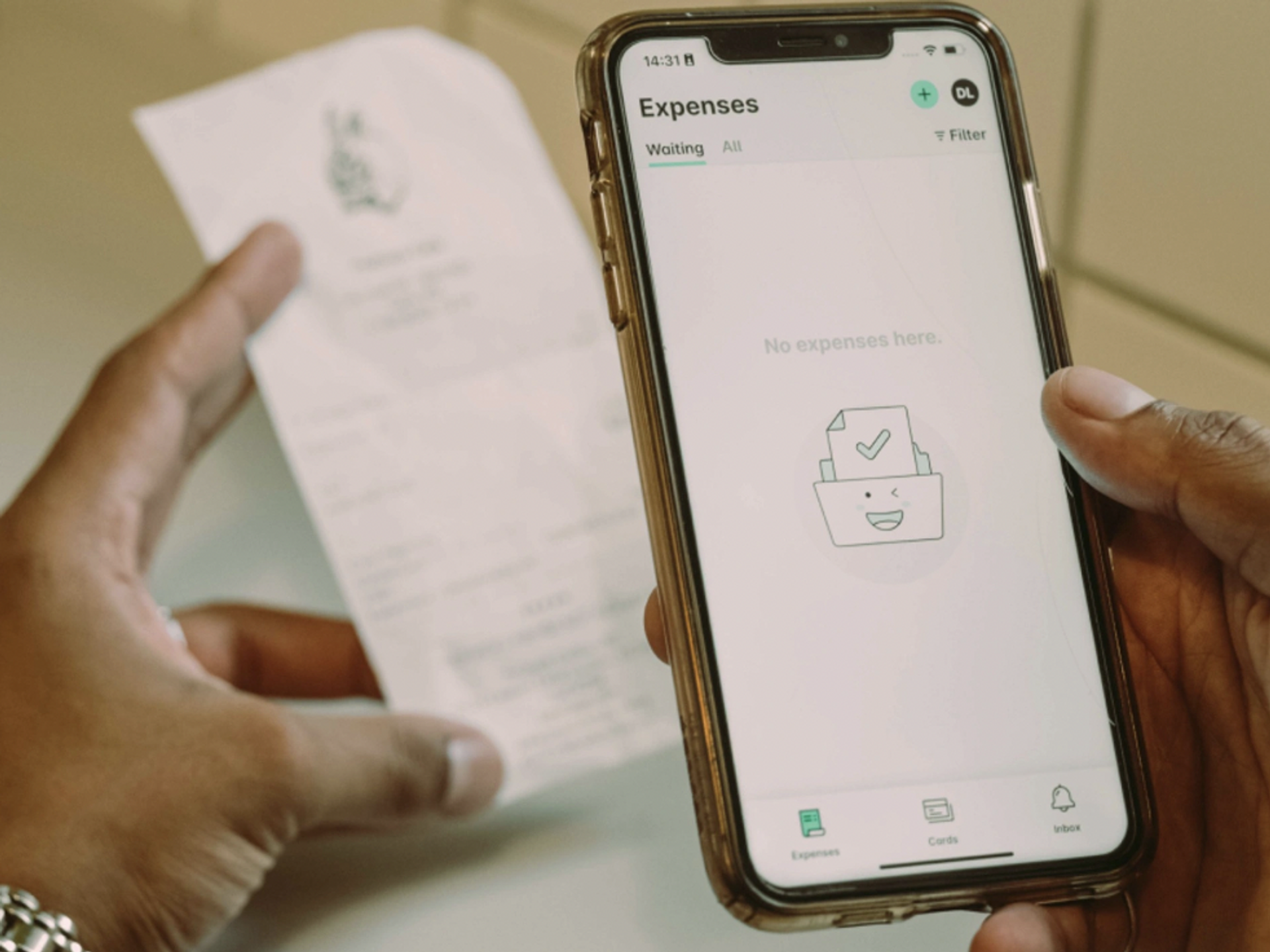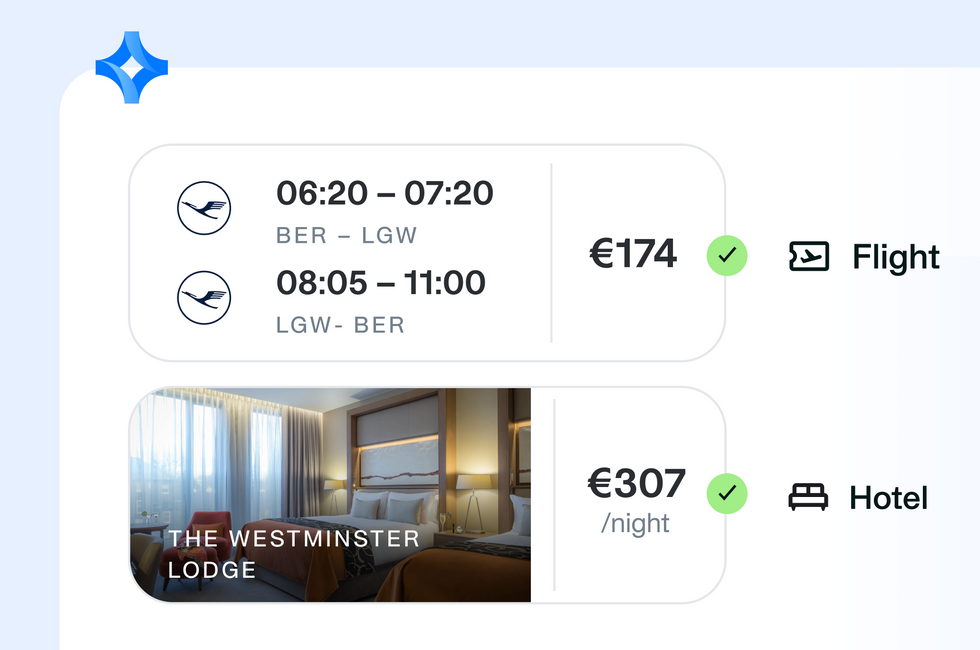
The 12 best features of a business expense tracking mobile app



You can transform your entire expensing process with a mobile business expensing app. You and your colleagues can submit, approve, and track expenses from the palm of your hand — wherever you are. The problem? There are so many expense app options and features to choose from — which is precisely why we’ve rounded up 12 of the most essential features to look for.
By submitting this form, you agree to receive emails about our products and services per our Privacy Policy.
Accurately tracking your business expenses gives you better financial awareness, makes you more profitable, helps you better manage your cash flow and makes tax returns a relative breeze.
As a finance professional, you know it's even better when you can delegate expense tracking to the people creating the expenses in the first place. And what better way than with familiar, on-the-go technology they're already accustomed to?
Using an expense management solution with an in-built expense tracking mobile app makes sense. In fact, 87% of businesses already rely on their employees using personal mobiles to access company apps.
How smart data capture changed the game at State of Play Hospitality
What is a business expense tracking mobile app?
A business expense tracking mobile app is software designed to record and categorise business expenses from a mobile device. The software application makes expensing both effortless and accurate for the employee recording the expense.
The app removes the need to record expenses manually and captures expenditure data, including merchant information, transaction amounts and dates. Plus, with some apps (including Payhawk), you and your colleagues can also automate most of your expense data capture. You simply take a picture of the receipt, and then the app automatically extracts all this data, decreasing data entry errors.
Some apps go a step further and directly integrate into leading accounting or ERP software, too, meaning important spend data automatically syncs across your tech stack, generating a single source of truth and improving visibility and control over finances.
The importance of business expense tracking
Standardising how you track your business expenses can create several benefits:
- Tax deductions:
Completing your company tax return with well-categorised and stored expense data is much easier than manually collecting and reconciling business spend. You can squeeze every penny out of your tax deductions by maintaining accurate records. There’s no chance of you overpaying on your tax bill. - Optimise your budgets:
Knowing how much you’re spending and who’s spending it, you can make data-driven business decisions to drive the company forward. Without this knowledge of expense data, you don’t know what’s being spent, why or by who, which can be debilitating for any business. - Insight into performance:
By tracking your business expenses, you can uncover expense patterns. Pinpoint spikes in spending and categorise by team, allowing you to investigate any issues before they affect your bottom line.
Features to look for in a business expense tracking mobile app
Determining which mobile expense tracker app suits your business needs means understanding what features you’d benefit from. Here are 12 useful features to look out for when shortlisting your expense software options.
1. Receipt scanning and categorisation
The ability to scan receipts with OCR technology makes expensing much more efficient. The employee simply takes a photo of their receipt or invoice; the technology extracts all the information it needs to process the expense and automatically categorises it as a receipt or invoice. This feature helps eliminate unnecessary manual data entry, reduce human errors, and keep on top of fraudulent expense claims.
2. Mobile accessibility and user-friendly interface
When you’re looking for a mobile expense tracking solution, you need an intuitive mobile experience. This means paired back menu options and a sleek user interface are essential. Employees and designated approvers need to be able to access the mobile app on the go, approve and upload documents, and easily submit and manage expenses from anywhere.
3. Integration with accounting software
An expense tracking app that seamlessly integrates with market-leading accounting platforms like QuickBooks or ERPs like Microsoft Dynamics makes manually reconciling expenditures a thing of the past. By integrating your tech stack, you can enjoy data centralisation, so all company spending is at your fingertips, giving you a clearer picture of your finances.
4. Smart synchronisation with credit cards
Waiting until month-end isn’t necessary with smart synchronisation. Instead, this feature allows real-time credit card transaction synchronisation with mobile expense management software. Your finance accounting teams can now enjoy up-to-date visibility and tighter control over company spending.


5. Automated mileage tracking
Automating mileage tracking allows administrators to set the mileage rate, track business trips, automatically calculate business travel expenses, and reimburse them accordingly — all within a few clicks. If you’re managing employees in multiple locations, you can set different rates for mileage based on laws in specific countries and business preferences.
6. Advanced reporting and analytics
Finding a software solution that builds automation into expense reporting can save you precious time. Advanced reporting and analytics features can include accessing real-time analytics, generating insightful reports on spending habits across the organisation or offering ESG reporting capabilities to track your company's carbon emissions.
You need reporting features that empower you to make impactful business decisions, whether that’s cutting costs, allocating resources elsewhere in the business or reducing your carbon footprint.
7. Expense approval and workflow management
By automating your approval chain, you can reduce unnecessary delays or bottlenecks. With access to expense approval and workflow management features, you can automate the approval process regardless of how complex your organisational structure is. Create different approval workflows depending on spending category, transaction type and more, and designated approvers can quickly approve expenses on the mobile app.
8. Multi-currency support
If you operate globally, you need to be able to implement custom spending rules across multiple entities, which you can’t do without software that supports multiple currencies. At Payhawk, we don’t offer a traditional multi-currency cards, but instead let you open accounts and issue cards for free local payments in seven currencies (GBP, EUR, USD, BGN, RON, DKK, and PLN)and low FX fees for all other currencies.
Our international bank payments support global business, too. Simon Shohet Finance and Strategy Senior Manager at Alma says:
Payhawk's international bank payments feature means we now have one platform in which we can manage our payments from personal reimbursements to paying suppliers in different currencies including USD. We like that we don't have to switch to different providers to make payments and that we now have complete spend overview in Payhawk.
9. Data security and privacy
You need a solution that provides robust data security and privacy protection because you’re dealing with sensitive expense data, particularly with employees accessing the software via mobile applications. Look for software that includes PCI DSS, ISO 27001 and SOC2 Type 2; then, you can rest easy knowing they adhere to internationally recognised information security practices.
10. Real-time notifications and alerts
A mobile expense tracker app that pushes out alerts via email and mobile helps keep approvers and employees engaged with the expense process. Approvers can receive an alert as soon as there’s a new request for funds, and employees receive alerts for when expenses require additional details or documentation if their expense has been rejected or returned and more. The ability to customise these alerts helps reduce alert fatigue.
11. Team collaboration and delegation
Giving employees the ability to manage their own expenses frees up finance team members to focus on add-value activities to move the business forward strategically. The functionality to delegate roles to different employees further removes unnecessary administrative work for finance teams. With an expense tracking app, everyone has their part to play, and the tech does the heavy lifting so the processes run smoothly.
12. Cloud storage and backup
Your financial data is sensitive, so you must guarantee that it’s stored and backed up correctly. Check with the platform that they employ various security measures to protect your data and their information systems should the worst happen.
Five things to consider when choosing the right business expense tracking mobile app
1. Business type and size
Different businesses follow different processes; for example, a large organisation will likely have more complex approval workflows, multiple entities and a global team to manage. Always consider the scaling capabilities of your chosen software — can they support you as your business grows?
2. Feature alignment
Always sign up for a demo to watch the features in action. Do the mobile tools and features align with what your business needs? Compare must-haves with nice-to-have features — make sure you’d find use in most, if not all, of the features on offer before signing up.
3. Pricing structure
Different software uses different pricing models; the most common are subscription-based and user or transaction based. These pricing models can get pricey quickly, particularly if you’re a growing organisation recruiting new employees. A subscription-based pricing structure gives users predictable monthly payments for the foreseeable future.
David Watson, Group Financial Controller at State of Play says:
We’re currently a group with six component entities, but as we expand, it will only increase the need to pay per platform. That’s what really sold Payhawk to us. We pay per platform rather than per transaction, which is vital to us as a hospitality business.
4. Ease of adoption
The app you choose needs to be easy to use. Otherwise, employees won’t use it; it’ll become just another software you pay for and don’t fully use. Ensure onboarding is comprehensive and ongoing support is available for anyone struggling with aspects of the software.
5. Security
Expense data is sensitive and needs to be well-protected. That’s why choosing an expense-tracking app that complies with industry-standard encryptions is necessary. Look for PCI DSS-compliant, ISO 27001 certified, SOC 2 Type 2 compliant, and GDPR-compliant software. Other security features include two-factor authentication, single sign-on, card-blocking options, and vulnerability scanning. Learn all about our comprehensive security features at Payhawk.
Finding the right business expense tracking mobile app takes time
Don’t rush into making a decision; take your time to research your business expense tracking options, sign up for product demonstrations and see the mobile app in action. The right tracking app will help you simplify and streamline your entire expense management process, engage users, reduce approval delays and remove bottlenecks.
See how our Payhawk mobile app works and why we have a 98% customer satisfaction score; schedule a demo today.
Trish Toovey works across the UK and US markets to craft content at Payhawk. Covering anything from ad copy to video scripting, Trish leans on a super varied background in copy and content creation for the finance, fashion, and travel industries.
Related Articles


The eight best travel and expense management software solutions

